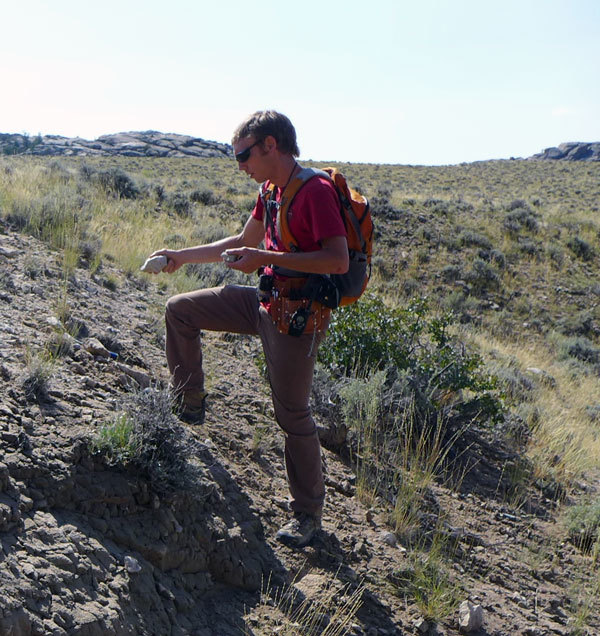NEWS RELEASE: Wyoming Phosphate Rock Shows Potential for Mining
Wyoming State Geological Survey sent this bulletin at 11/23/2015 02:06 PM MST |
|
Having trouble viewing this email? View it as a Web page. |
Nov. 23, 2015
******FOR IMMEDIATE RELEASE******
Media Contact:
Chamois Andersen
(307) 766-2286 x231
chamois.andersen@wyo.gov

Wyoming Phosphate Rock Shows Potential for Mining
Wyoming hosts numerous occurrences of phosphate rock, which is a natural resource crucial to global food security, according to a new report published by the Wyoming State Geological Survey (WSGS). Ninety percent of the world’s mined phosphate rock is used in agriculture and food production, mostly as fertilizer, with some for animal feed and food additives.
“Phosphate Rock in Wyoming” (Report of Investigations No. 68) provides a geologic overview of phosphate occurrences in Wyoming, and includes historical information, as well as a compilation of previously published data and new data from samples collected in the field and color location maps.
“Wyoming could add to the global production of phosphates as many of the state’s high-grade occurrences are located relatively close to existing processing plants in Rock Springs, Wyoming and eastern Idaho,” says Jacob Carnes, WSGS geologist and author of the study.
Phosphorus is recognized as an important nutrient necessary for all life. It enters the terrestrial food chain when plants absorb it from the soil. It is one of three nutrients (nitrogen, potassium and phosphorus) used in commercial fertilizer. Large-scale agriculture can deplete the soluble phosphorus in soil, which is why the agricultural industry utilizes phosphorus fertilizer for food production.
It typically is only a minor component of rocks, but with favorable geologic conditions, phosphorus can be concentrated in phosphate rock. Phosphate rock is currently the only source of phosphorus for synthetic fertilizers and other industrial uses.
The United States is the third largest phosphate-producing country in the world, and produced more than 27.1 million tonnes in 2014. China ranks No. 1 followed by Morocco. The largest U.S. phosphate reserves and production occur in Florida, North Carolina, Idaho and Utah. According to the U.S. Geological Survey, Florida and North Carolina accounted for approximately 80 percent of total U.S. output in 2014, with the remainder coming from Utah and Idaho.
Demand for phosphate rock is projected to increase as the earth’s population grows and thus global food production. As a result, according to the United Nations Food and Agriculture Organization, global fertilizer consumption will increase by as much as 25 percent by 2050.
“This investigation demonstrates that there are still notable phosphate deposits in Wyoming despite production being dormant for more than 35 years,” Carnes says.
For this investigation, Carnes collected more than 20 samples from several known and potential deposits, primarily in western Wyoming. “We believe the data included in this report will be a great starting point for initiating new phosphate exploration and resource evaluation in Wyoming,” he says.
Phosphate rock has been previously mined in Wyoming, with historic mining operations dating back to 1907 in the western portion of the state. Mining was sporadic in the state up until 1947 with the opening of the Leefe Mine near Kemmerer. The Leefe Mine produced phosphate rock up until 1977 when it closed because the economically recoverable phosphate rock had been depleted.
Apatite is the most common phosphate mineral, and can be found in sedimentary, igneous and metamorphic rocks. In Wyoming, the most important phosphate occurrences are hosted in the marine shales of the Permian Phosphoria Formation. Some igneous and metamorphic rocks rich in iron, titanium and/or the rare earth elements may also host phosphate occurrences.
A compilation of historical data from phosphate deposits across the state was supplemented with data from samples collected by WSGS geologists. Scientific technology known as powder X-ray diffraction and whole-rock geochemical analysis of these samples were used to determine the amount and type of phosphates present.
For additional information, please check out the WSGS Web page on Wyoming phosphates.
###
You are subscribed to All News Releases for Wyoming State Geological Survey. This information has recently been updated, and is now available.

